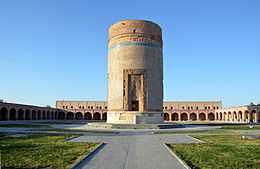Murshid Shaykh Ḥaydar Ṣafavi | |
|---|---|
 | |
| 6th Sheikh of the Safavid order | |
| In office 1460–1488 | |
| Preceded by | Shaykh Junayd |
| Succeeded by | Soltan-Ali |
| Personal details | |
| Born | June–July 1459 Amid, Diyar Bakr (present-day Diyarbakır, Turkey) |
| Died | 9 July 1488 (aged 28-29) Tabasaran, Dagestan (present-day Russia) |
| Resting place | Ardabil |
| Spouse(s) | Halima (Martha), daughter of Uzun Hasan by Despina Khatun (Theodora Megale Komnene) A daughter of Farid al-din Jafar b. Khvajeh Ali |
| Children | Soltan-Ali Ibrahim Mirza Ismail I Fakhr-Jahan Khanum Malek Khanum Sayyed Hassan |
| Parents |
|
| Relatives | Khvajeh Mohammad Safavi (brother) Khvajeh Jamshid Safavi (brother) Shah Pasha Khatun (sister) |
| Part of a series on Shia Islam |
| Twelver Shi'ism |
|---|
|
|
Shaykh Haydar or Sheikh Haydar (Persian: شیخ حیدر Shaikh Ḥaidar; 1459–9 July 1488) was the successor of his father (Shaykh Junayd) as leader of the Safavid order from 1460 to 1488. Haydar maintained the policies and political ambitions initiated by his father. Under Sheikh Haydar, the order became crystallized as a political movement with an increasingly extremist heterodox Twelver Shi'i coloring and Haydar was viewed as a divine figure by his followers.[2] Shaykh Haydar was responsible for instructing his followers to adopt the scarlet headgear of 12 gores commemorating The Twelve Imams, which led to them being designated by the Turkish term Qizilbash "Red Head".[3]
Haydar soon came into conflict with the Shirvanshahs, as well as the Ak Koyunlu, who were allied to the former. Following several campaigns into the North Caucasus, mainly in Circassia and Dagestan, he and his men were eventually trapped in 1488 at Tabasaran by the combined forces of the Shirvanshah Farrukh Yassar and Ya'qub Beg of the Ak Koyunlu. In a pitched battled that ensued, Shaykh Haydar and his men were defeated and killed. He was succeeded by his son Soltan-Ali as leader of the order. Soltan-Ali was on his part succeeded by Haydar's younger son, who would become the founder of the Safavid dynasty, and known by his regnal name of Ismail I.